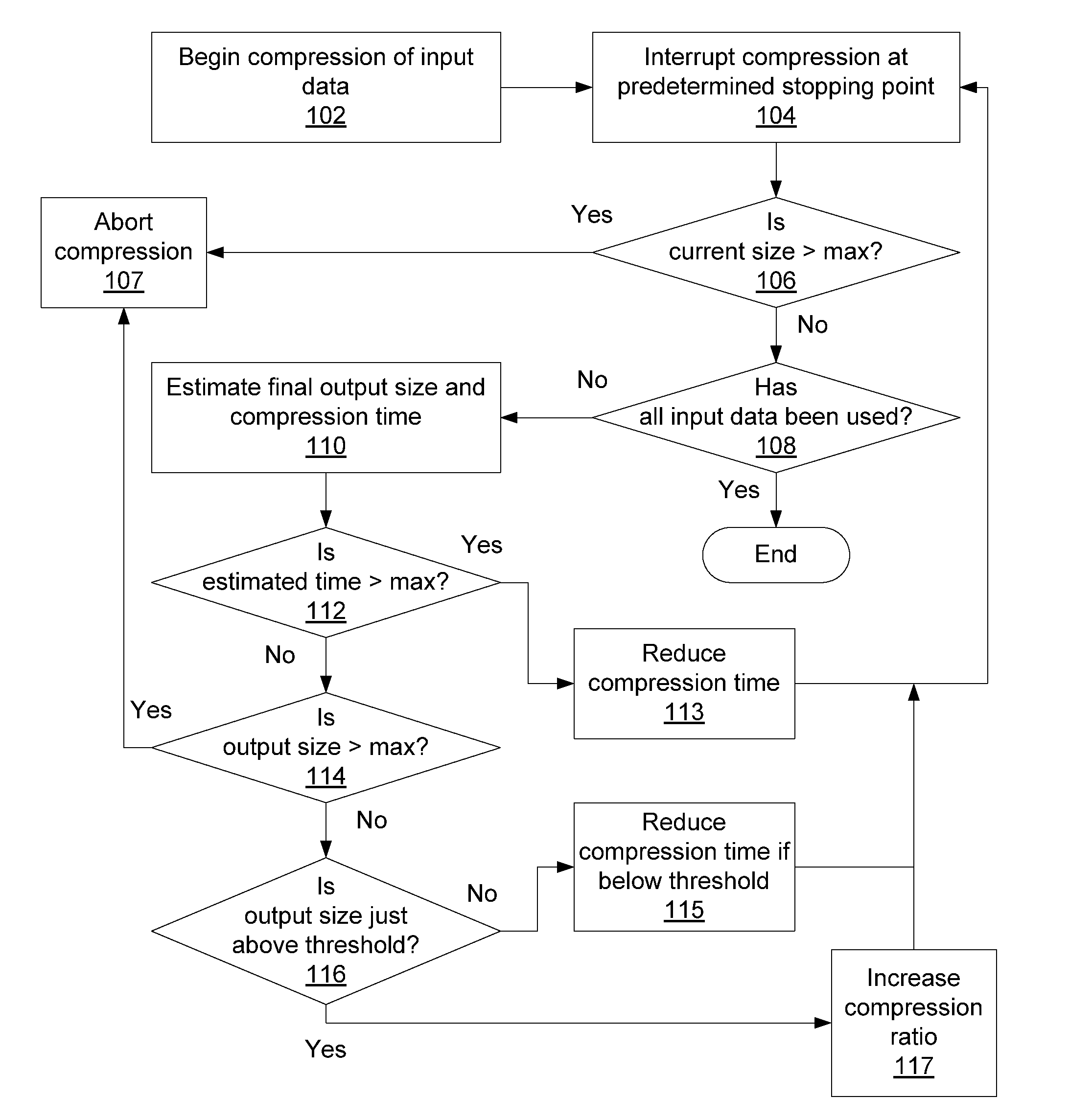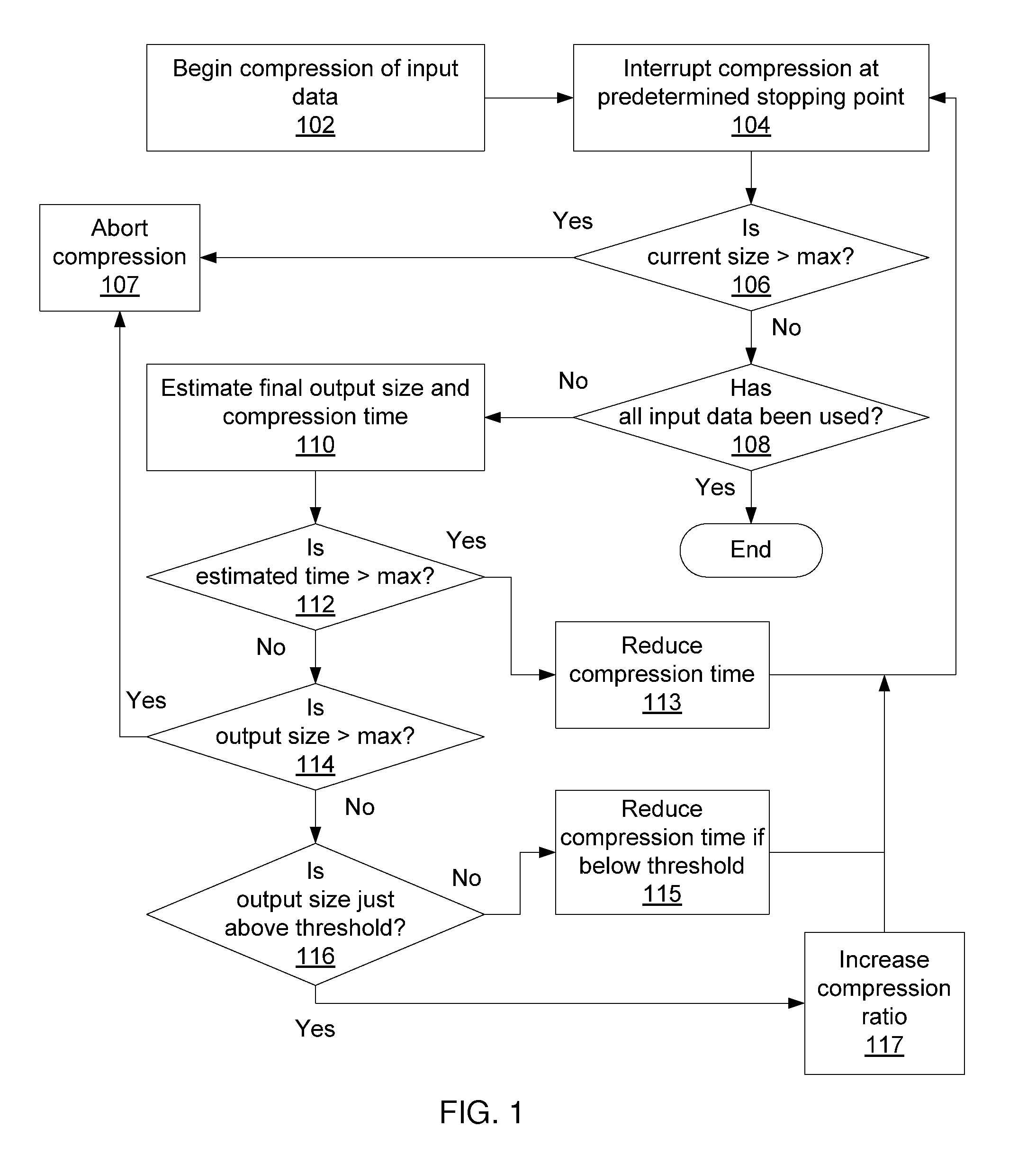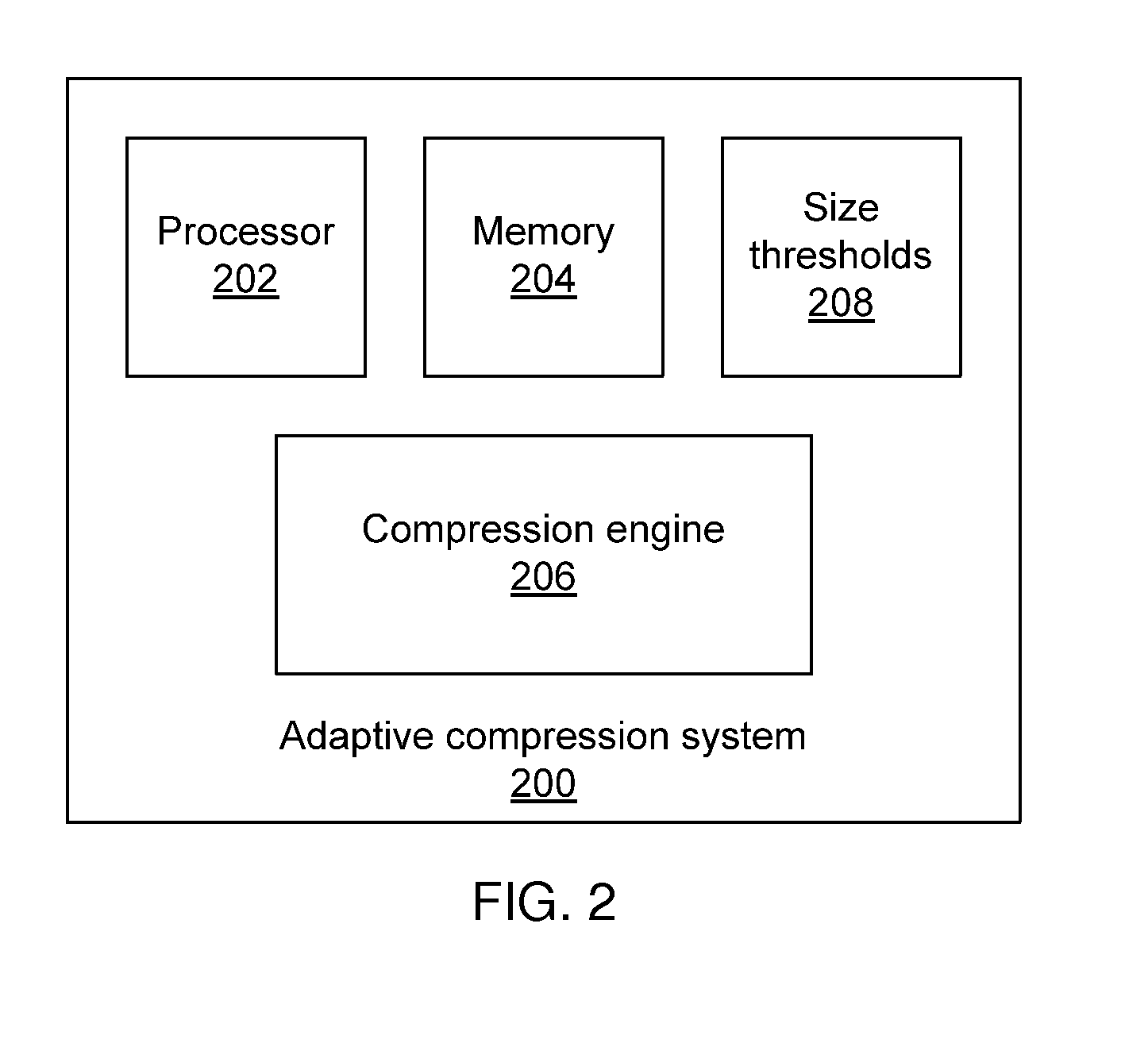Adaptive compression supporting output size thresholds
- Summary
- Abstract
- Description
- Claims
- Application Information
AI Technical Summary
Benefits of technology
Problems solved by technology
Method used
Image
Examples
Embodiment Construction
[0014]Embodiments of the present principles provide adaptive compression methods that are sensitive to output size thresholds. For applications in which only certain output sizes are of use, continuing to perform compression past a threshold output size may require more time and computing effort than is necessary. Alternatively, a large benefit might be achieved if compression size could be decreased by a small number of bytes, and if time happens to be available for additional compression computations.
[0015]In one example, a cache is targeted in which memory must hold metadata for a large number of 32 kB inputs that are compressed. To minimize the memory overhead, the present embodiments compress data that is stored in allocation units of either 8 kB, 16 kB, 24 kB, or 32 kB. Storing any number of bytes in the range 8193 to 16536 bytes represents an equivalent cost, as any such data will be stored using the full 16 kB. The present compression methods therefore adapt, using less CPU ...
PUM
 Login to View More
Login to View More Abstract
Description
Claims
Application Information
 Login to View More
Login to View More - R&D
- Intellectual Property
- Life Sciences
- Materials
- Tech Scout
- Unparalleled Data Quality
- Higher Quality Content
- 60% Fewer Hallucinations
Browse by: Latest US Patents, China's latest patents, Technical Efficacy Thesaurus, Application Domain, Technology Topic, Popular Technical Reports.
© 2025 PatSnap. All rights reserved.Legal|Privacy policy|Modern Slavery Act Transparency Statement|Sitemap|About US| Contact US: help@patsnap.com



